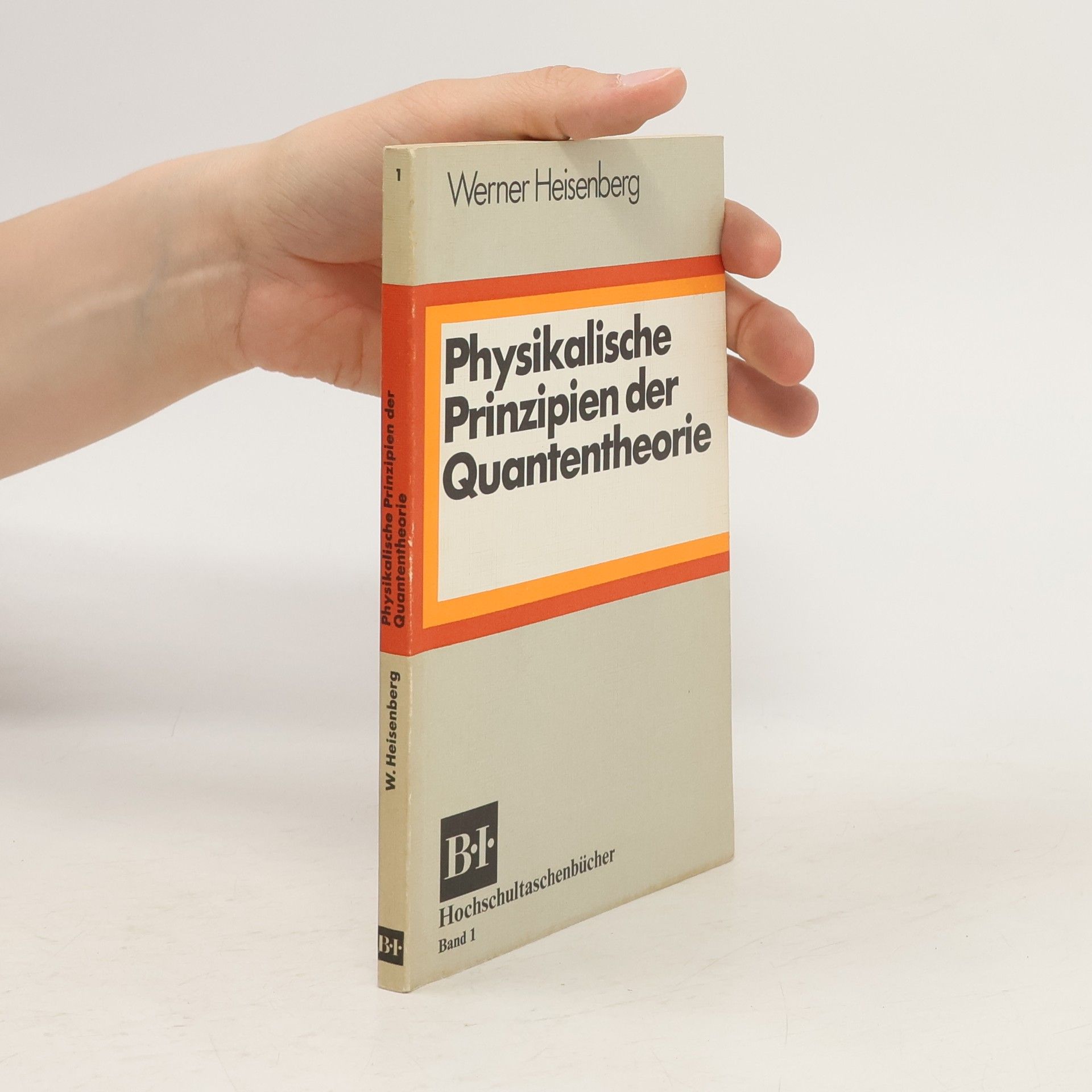Werner Heisenberg Livres
Werner Heisenberg était un physicien théoricien allemand qui a posé les bases de la mécanique quantique, devenant célèbre pour son principe d'incertitude. Son travail a exploré la nature profonde de la réalité et de l'observation au niveau subatomique. Les découvertes de Heisenberg ont remis en question les notions classiques de déterminisme et introduit une nouvelle couche d'imprévisibilité inhérente en physique. Son impact sur notre compréhension de l'univers reste immense.







My dear Li
- 328pages
- 12 heures de lecture
Personal letters reveal the quandary of a prominent German physicist during the Nazi years and the strength he shared with his loving wife Nobel Prize-winning physicist Werner Heisenberg lived far from his wife, Elisabeth, during most of the Second World War. An eminent scientist, Werner headed Germany's national atomic research project in Berlin, while Elisabeth and their children lived more safely in Bavaria. This selection of more than 300 letters exchanged between husband and wife reveals the precarious nature of Werner's position in the Third Reich, Elisabeth's increasingly difficult everyday life as the war progressed, and the devoted relationship that gave strength to them both. These letters provide a fascinating new perspective on Werner's much-debated wartime work and his attitude toward the atomic bomb. They also shed light on his reluctance to emigrate despite the urging of friends. An excerpt from his private diary, an introduction and notes by his daughter, and a selection of personal family photographs complete this compelling volume.
Reality and Its Order
- 160pages
- 6 heures de lecture
Exploring the intersection of philosophy and science, this text delves into Heisenberg's reflections on the nature of reality and the implications of quantum mechanics. As a prominent figure in 20th-century science, Heisenberg articulates his thoughts on how our understanding of the physical world shapes our perception of reality. This English translation offers readers a unique opportunity to engage with his groundbreaking ideas and the philosophical questions they raise, making it an essential read for those interested in science and philosophy.
In nine essays and lectures composed in the last years of his life, Werner Heisenberg offers a bold appraisal of the scientific method in the twentieth century--and relates its philosophical impact on contemporary society and science to the particulars of molecular biology, astrophysics, and related disciplines. Are the problems we define and pursue freely chosen according to our conscious interests? Or does the historical process itself determine which phenomena merit examination at any one time? Heisenberg discusses these issues in the most far-ranging philosophical terms, while illustrating them with specific examples.
Nobel Laureate discusses quantum theory, uncertainty, wave mechanics, work of Dirac, Schroedinger, Compton, Einstein, others. "An authoritative statement of Heisenberg's views on this aspect of the quantum theory." ? Nature.
The seminal work by one of the most important thinkers of the twentieth century, Physics and Philosophy is Werner Heisenberg's concise and accessible narrative of the revolution in modern physics, in which he played a towering role. The outgrowth of a celebrated lecture series, this book remains as relevant, provocative, and fascinating as when it was first published in 1958. A brilliant scientist whose ideas altered our perception of the universe, Heisenberg is considered the father of quantum physics; he is most famous for the Uncertainty Principle, which states that quantum particles do not occupy a fixed, measurable position. His contributions remain a cornerstone of contemporary physics theory and application.
On Fundamental Physics and Scientific Knowledge
- 164pages
- 6 heures de lecture
This collection contains a new publication of the Heisenberg, Born, Schroedinger and Auger, On Modern Physics and the Nobel lectures of Werner Heisenberg, Erwin Schroedinger and Max Born.In this collection three Nobel laureates and a renowned authority on space exploration discuss a wide range of issues - from lessons that can be learned from the ancient Greek philosophers, to the advancements in fundamental physics in the twentieth century, to the dark implications of scientific discoveries, to the methods and limits of scientific knowledge - in a language that is understandable by a wide audience.


